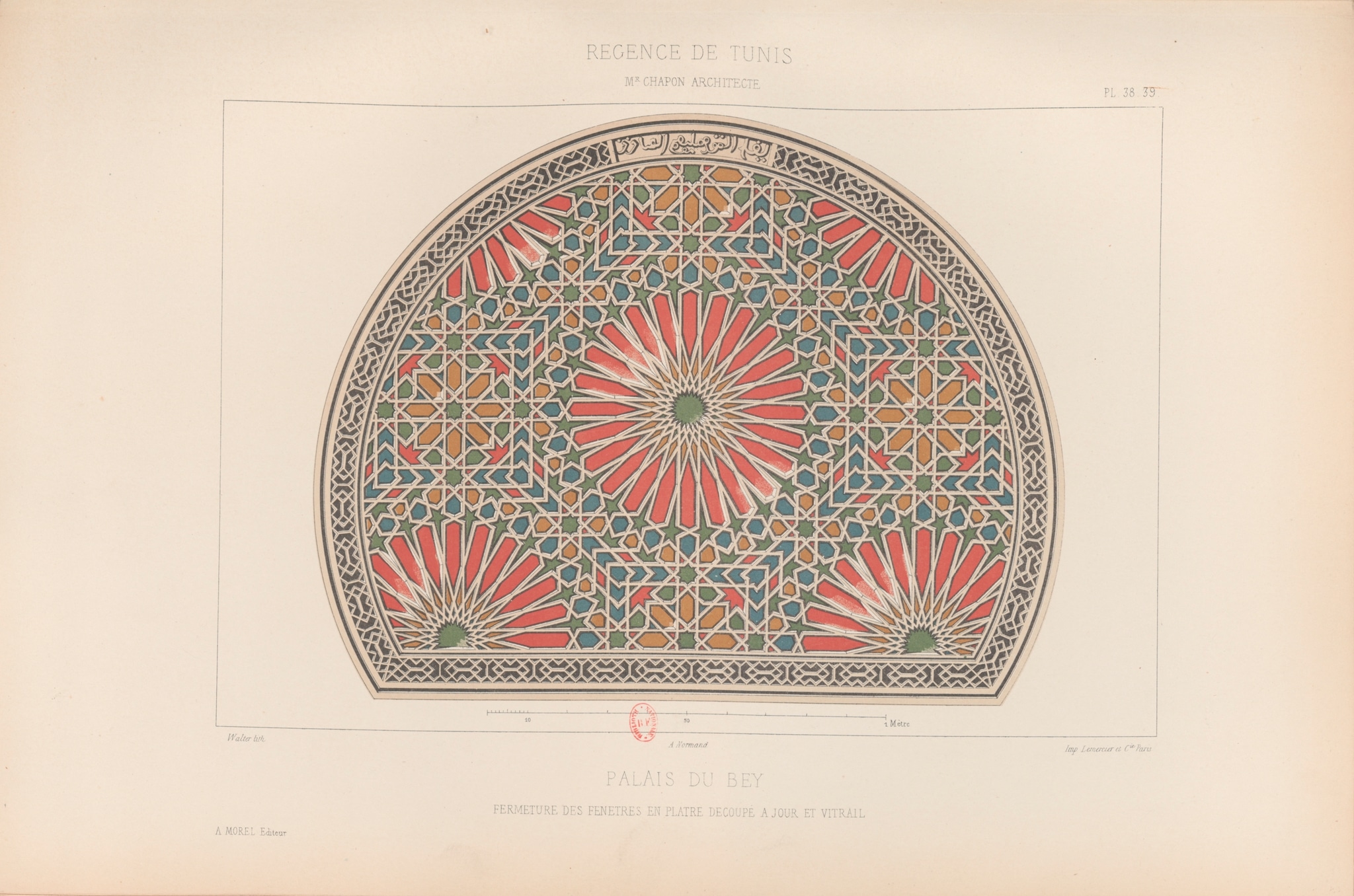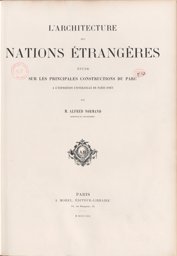Pl. 38–39, a colour plate in Alfred Normand's L'architecture des nations étrangères. Études sur les principales constructions du parc à l’Exposition Universelle de Paris (1867), published in 1870 in Paris by A. Morel, éditeur-libraire, shows a lunette-shaped stucco and glass window of the Tunisian pavilion at the 1867 Exposition Universelle in Paris.
A carved stucco band with repeating geometric forms and (at the top) an inscription imitating Arabic letters surrounds the central stucco lattice. It is perforated by geometric forms around big twenty-four-pointed stars and smaller eight-pointed stars. The pieces of coloured glass are yellow, blue, green, and red. The illustration also shows the three-dimensionality of the stucco lattice by depicting the angled stucco perforations by means of shading.
Underneath the illustration, a scale shows that the window is of great size, with a radius of about 90cm.
The caption describes the stucco and glass window as a ‘fermeture des fenêtres en plâtre découpé à jour et vitrail’.


